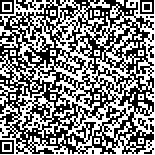|
| 引用本文: | 张博言,钟勇.一种基于多样性正实例的单目标跟踪算法[J].哈尔滨工业大学学报,2020,52(10):135.DOI:10.11918/201907131 |
| ZHANG Boyan,ZHONG Yong.Single target tracking algorithm based on diverse positive instances[J].Journal of Harbin Institute of Technology,2020,52(10):135.DOI:10.11918/201907131 |
|
| |
|
|
| 本文已被:浏览 1267次 下载 948次 |

码上扫一扫! |
|
|
| 一种基于多样性正实例的单目标跟踪算法 |
|
张博言1,2,钟勇1,2
|
|
(1.中国科学院 成都计算机应用研究所,成都 610041; 2.中国科学院大学,北京 100049)
|
|
| 摘要: |
| 单目标跟踪是计算机视觉领域中最具有挑战性的应用场景之一. 针对跟踪过程中目标物体被遮挡以及运动过程中形变、画面模糊等问题,本文提出一种基于多样性正样本实例的单目标跟踪算法,同时缓解了训练样本不足以及样本缺乏多样性的问题. 在离线阶段,本文算法首先使用变分自编码器(Variational Autoencoder,VAE)对原始训练样本进行编码映射到隐空间,然后通过隐空间采样重构生成包含多样性的困难正样本数据,提高训练数据的多元性,并结合原始训练样本构建训练数据集;其次,对于训练序列的目标模板、正负样本,使用概率三元组损失函数训练跟踪网络,深入挖掘正负样本间关联,提高跟踪网络的判别性;在线测试阶段,使用训练的孪生神经网络(Siamese Neural Network,SNN)对目标进行跟踪定位,通过对目标模板和搜索区域执行互相关操作,确定目标在当前时刻的位置. 对比实验结果表明,本文算法提高了SNN跟踪网络在背景相似物干扰、目标物体运动过程中形态变化、快速运动、旋转、模糊以及被遮挡情况下的鲁棒性和定位准确性,并保持了实时的跟踪表现. |
| 关键词: 单目标跟踪 卷积神经网络 孪生神经网络 变分自编码器 三元组损失 |
| DOI:10.11918/201907131 |
| 分类号:TP391.41 |
| 文献标识码:A |
| 基金项目:四川省科技厅重点研发项目(2018GZ0231) |
|
| Single target tracking algorithm based on diverse positive instances |
|
ZHANG Boyan1,2,ZHONG Yong1,2
|
|
(1.Chengdu Institute of Computer Applications, Chinese Academy of Sciences, Chengdu 610041, China; 2.University of Chinese Academy of Sciences, Beijing 100049, China)
|
| Abstract: |
| Single target tracking is one of the most challenging application scenarios in the field of computer vision. To solve the problems of occlusion, object deformation, and motion blur during tracking, a training method was proposed to train single target tracking network based on generated diverse positive instances, and the problem of scarcity of various training samples was also mitigated. Specifically, during the offline stage, a variational autoencoder (VAE) was employed to encode original samples into latent space. Then, the hard positive data was generated via sampling variables in latent space to improve the diversity of the training data, and a training dataset was constructed by combining the generated data and the original samples. Besides, for the target template and the negative and positive samples of the training sequences, a probability triple loss function was utilized to train the tracking network. The relation between the positive and negative samples was investigated to improve the discriminative power of the tracking network. During the test stage, the pretrained Siamese neural network (SNN) was used to track the target, and the position of the target at the moment could be determined by correlating the target template and the search area. The experiment shows that the proposed algorithm improved the robustness and accuracy of SNN tracking in the cases of interference of similar objects and deformation, fast motion, rotation, motion blur, and occlusion of target during movement, and achieved real-time tracking performance. |
| Key words: single target tracking convolutional neural network Siamese neural network variational autoencoder triple loss |
|
|
|
|







